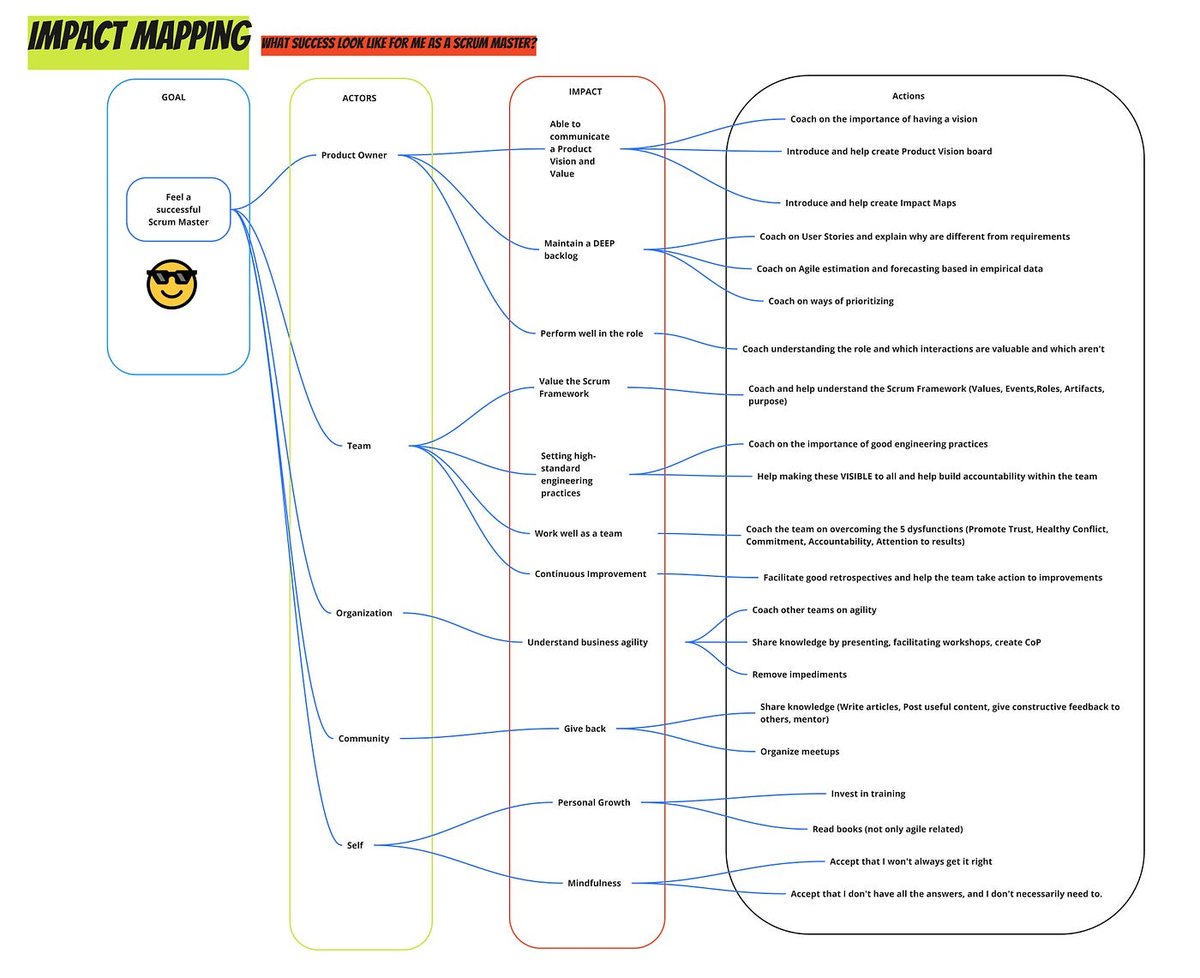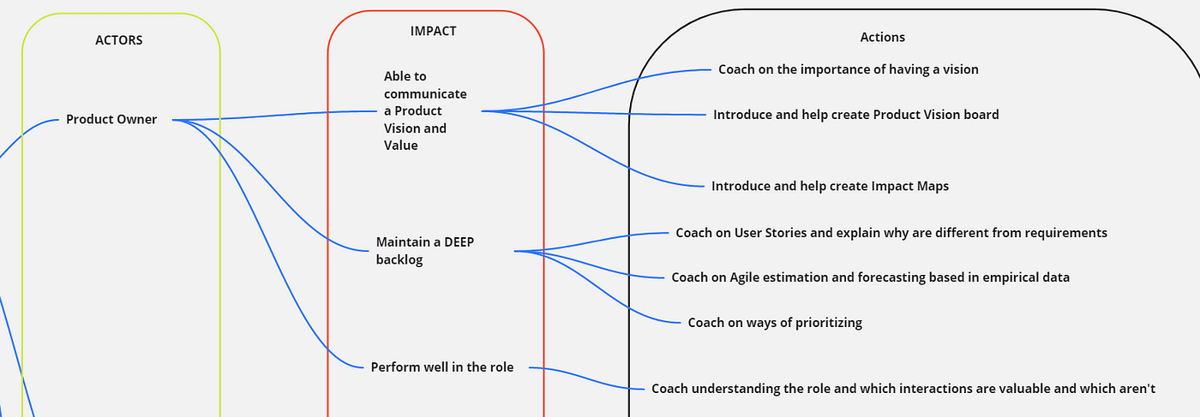This article was originally posted here.
Whether you are a Scrum Master or a Hiring Manager (for a Scrum Master) you should read this to make sure you are set for success for the role of a Scrum Master.
When a Scrum Master has a hard time defining what success looks like for themselves, several things can happen.
“Would you tell me, please, which way I ought to go from here?”“That depends a good deal on where you want to get to,” said the Cat.“I don’t much care where — “ said Alice.
“Then it doesn’t matter which way you go,” said the Cat.- Lewis Carrol, Alice’s Adventures in Wonderland
Simply because it feels right, it feels like having a sense of purpose and a mission.
It’s like having a north star guiding us towards what we want to achieve and this is necessary to become a great Scrum Master useful to the organisation they serve.
One day I was listening to Vasco Duarte Scrum Master Toolbox podcast and he usually asks his guests….
Update: Since then I have been a guest to the podcast, you can listen to my episodes here
So tell me what does success looks like for you as a Scrum Master? — Vasco Duarte
And while some guests have it figured out, many have a hard time giving an answer. And I guess that’s because it is difficult to express what success looks like in a simple sentence, specially if one has never given a serious thought about it before.
That prompted me to chart “What Success looks like for me?”.
As I started thinking about it, it became crystal clear that my success as a Scrum Master is inherently connected with the success of the people I serve.
I decided then to draft an Impact Map to help me discover what success looks like.
As I started thinking about it, it became crystal clear that my success as a Scrum Master is inherently connected with the success of the people I serve.

Impact Mapping exercise identifying the actors and impacts that defines my success as a Scrum Master — Image by Wilson Govindji
To draft my Impact Mapping I followed the steps below:
While neither this is an exhaustive list of things nor limited to those only, they are just some I believe at this moment in time are important to my goal — “Feel a Successful Scrum Master”.
This exercise helped me discover who are the Actors that contribute for my success, what Impacts I want them to have and finally what are the things I need to do (which only depends on me) to drive that impact.
Product Owner (PO) is a key player for my success, I always guide them to create a Vision and communicate that Vision, it’s also important that the PO understands how critical it is to maintain a tidy product backlog, the right amount of detail that enables the team to understand the intent (What) but not detailed enough that constrains the team on the implementation (How), for new PO transitioning from traditional roles as Project Managers I feel is important for them to let go of the “artificial” certainty around dates and embrace empiricism, agile ways of estimation and forecasting.

Product Owner / Impacts / Actions — Image by Wilson Govindji
The team is the actor I spend the most time with, so it’s important that I coach them in what Scrum is, what the roles are, the meaning of the events and the artifacts, for less mature teams while the individuals may know best engineering practices they may not understand why it’s important to have them visible and agreed as a team.
Teams are composed by human beings and each human being is different, so when people come together the team always goes through some phases as explained by Bruce Tuckman with his Tuckman Model, as they form and storm many dysfunctions start emerging, they are very visible to the Scrum Master that is standing a step away from the team and have a holistic view over their actions and interactions. That’s when I use the 5 Dysfunctions of a Team as a model to help fix these dysfunctions along with the team.

Team / Impacts / Actions — Image by Wilson Govindji
This is where I feel many Scrum Masters fall short, they avoid going beyond the team level.
The second most valuable currency for the Scrum Master is Influence which is only trumped by Trust
One of the values of Scrum is Courage and stepping outside the circle of the team is beneficial for several reasons. I will mention just few:

Organization / Impacts / Actions — Image by Wilson Govindji
When I started to shift my career towards Scrum Mastery I benefited so much from the several agile communities such The Scrum Master Clinics organized by Tobias Mayer (author of the book “The People’s Scrum”) at London, many meetup groups I’ve attended, articles and blogposts written and shared by more experienced folks than I was at the time.
In the end of 2019 I decided to create my own meetup group in Newbury — UK called Newbury Agile Group. As we entered 2020 the world was hit by a pandemic and therefore I had to shift towards remote meetups, since then I got the chance to have hosted great names in the agile community such as Geoff Watts (author of the book “Scrum Mastery: From Good To Great Servant-Leadership”), Roman Pichler (author of the book (“Agile Product Management with Scrum”), Allan Kelly (author of the book “Xanpan” and most recently “Succeeding with OKRs in Agile”) and many others.
Creating the meetup, organizing events, writing blogposts, give training and coaching is one way of giving back to a community that has given so much to me.

Community / Impacts / Actions — Image by Wilson Govindji
It would be weird if I weren’t playing a big part as being responsible for my success.
I feel the Scrum Master role is evolving and therefore I feel that I need to evolve constantly, that’s not a problem for me because I love to learn new things and experiment them, I like to invest my time in attending relevant training, attending meetups, reading books, listening to podcasts and putting to practice what I learn and check what worked and what didn’t.
Someone told me that I should take it easy and take time to disconnect, however I don’t see my work as a job from 9–5, I see it as a passion and when someone is passionate there’s no such thing as disconnecting — yes I do like to spend time with my family, connecting with friends and doing other stuff but my point is… what I do is my Ikigai and when someone is really passionate and committed to invest in themselves there are more chances to feel successful and fulfilled.

Self / Impacts / Actions — Image by Wilson Govindji
What happens when someone doesn’t know what success looks like for them as a Scrum Master?
First and foremost the role of the Scrum Master becomes a shell for other roles that aligns more to past roles performed by the Scrum Master and secondly creates the right environment for anti-patterns to start emerging and this may very well be by the influence of external people (specially by the Hiring manager that had a very weak understanding of the role in the first place).
Some anti-patterns I have observed:
As I mentioned Success is a more a feeling rather than an end-state and therefore is quite subjective.
What I offered here is a way for me to define what it feels for me to be a successful Scrum Master, as I went through this thought process I understood:
Find out if MentorCruise is a good fit for you – fast, free, and no pressure.
Tell us about your goals
See how mentorship compares to other options
Preview your first month
